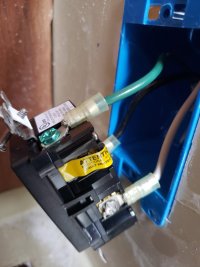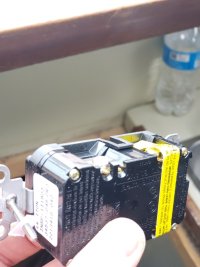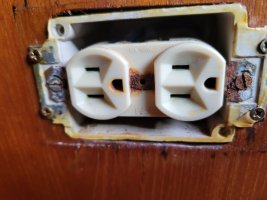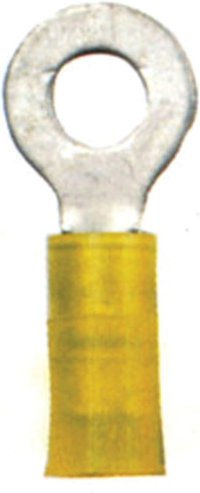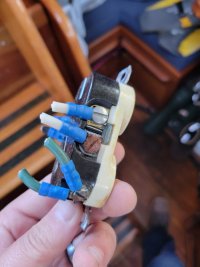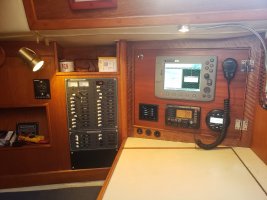I'm not an electrician (industrial, marine, or home) and I'm not an expert on ABYC standards. I try to research from known sources (MarineHowTo.com, Nigel Calder books, etc) and apply what I've read. What I've found is most people I've hired and factory installs do not meet the standards I've read about, so I'm apprehensive to have "professionals" work on my boat which is one of the reasons I do most think myself (the other being cost). With that disclaimer out of the way, here's what I recommend:
Wire: 12 AWG triplex marine tinned stranded (for distribution circuits only, use 10 AWG for main feed from the plug to panel)-
https://www.amazon.com/Ancor-131310...t=&hvlocphy=9033382&hvtargid=pla-556505896237
Connectors: Anchor 10-12 #8 flanged spade connectors:
https://www.amazon.com/Ancor-Marine-Grade-Shrink-Terminals/dp/B000NI3BK0?th=1
(I'm not convinced these are the best out there. The crimp part is not a continuous (welded or brazed together), but I haven't found ones that are. I've tested these in my garage with weights and, combined with my crimper, they seem to be good enough)
Crimper: MarineHowTo.com used to sell afordabloe (apx. $60) crimpers with jaws for heat shrink terminals. I purchased one of these and it's been good. They are uncomfortable to use, but the results are good. I can't seem to find them on the site anymore. Rod does have an amazon link where you can find other crimpers he recommends:
https://www.amazon.com/shop/marinehowto
Outlets: This is where I was looking for the most advice and haven't found the perfect outlet yet. What I'm looking for is an outlet with terminal screws that can either accept ring terminals (ideal) or flanged spade connectors, high quality, and resists water or moist environments. The outlets I chose were 15 amp industrial tamper resistant Leviton outlets form Lowes:
I think these are it:
https://www.lowes.com/pd/Eaton-Arro...ZlXVsVHmuzlg6QavfxMaAr0dEALw_wcB&gclsrc=aw.ds
If I had to do it over, I would look at hospital grade outlets like this:
(I haven't seen these in person, so I don't know if there's a blocking post or any other problem prohibiting using a space terminal.
Panel: My boat came from the previous owner with a BlueSea systems 8 position panel, so I kept it. If I was starting from scratch or replacing the original panel, I would get one with an amp meter and ELCI breaker like this:
https://www.amazon.com/ELCI-Main-Do...9718&s=hi&sprefix=elci+panel,tools,152&sr=1-3 Note that this one comes with a volt meter, but I would change it out for the more functional amp meter. As mentioned quite a few times on the forum for DC systems, use of remote terminal strips to consolidate the neutral and ground buss is highly recommended as opposed to bringing everything to the back of these panels.
Galvanic isolator: I chose to go the inexpensive route with this one:
https://www.emarineinc.com/Yandina-Galvanic-Isolator (to ensure it's operating safely, I test it frequently to ensure the diodes haven't failed creating an open circuit to ground)
If you don't want to test frequently, you can go with one that indicates failure like this:
Shore Power Plug: Probably the most important part of the shore power system. Even if your plug is brand new, replace it with a smart plug:
https://www.amazon.com/dp/B008JH1TG...HHPI90L&ref_=aip_sf_list_spv_ofs_mixed_d_asin. MarineHowTo goes into great detail on why this is so important.
Again, this is just rambling from a fellow boat owner, so it's worth what you pay for it. Hopefully others will chime in with their experience and offer up some good alternative (and hopefully even better) products.
